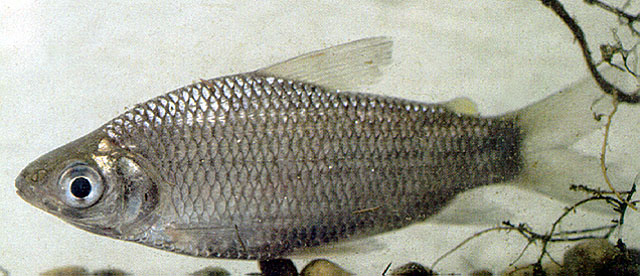| Curimatidae (Toothless characins) |
| 27 cm SL (male/unsexed); max.weight: 290.0 g |
|
benthopelagic; freshwater |
| South America: Magdalena and Atrato River basins, rivers of Pacific versant of Panama, and southwestern Costa Rica. |
|
Dorsal spines (total): 0-0; Dorsal soft rays (total): 11-12; Anal spines: 0-0; Anal soft rays: 9-10; Vertebrae: 31-33. Differs from other Cyphocharax (except aspilos) by the absence of multiple series of longitudinal patterns of dark pigmentation on body, the absence of a large spot of pigmentation on the body, the absence of a large spot of pigmentation on the dorsal fin, the absence of a rotund spot or longitudinal stripe of dark pigmentation on the midlateral surface of the caudal peduncle, the number of lateral line scales, and the depth of caudal peduncle of 0.13-0.15 of SL (Ref. 11334). |
| Inhabits rivers or creeks of moderate current between 20 and 10 m elevation. Abundant in shallow waters over sand or mud bottoms where it feeds on detritus, diatoms and algae (Ref. 36880). Found in swamps or marshes and rivers (Ref. 26543). Feeds exclusively on detritus (Ref. 26543). |
|
Least Concern (LC); Date assessed: 01 April 2019 Ref. (130435)
|
| harmless |
Source and more info: www.fishbase.org. For personal, classroom, and other internal use only. Not for publication.

